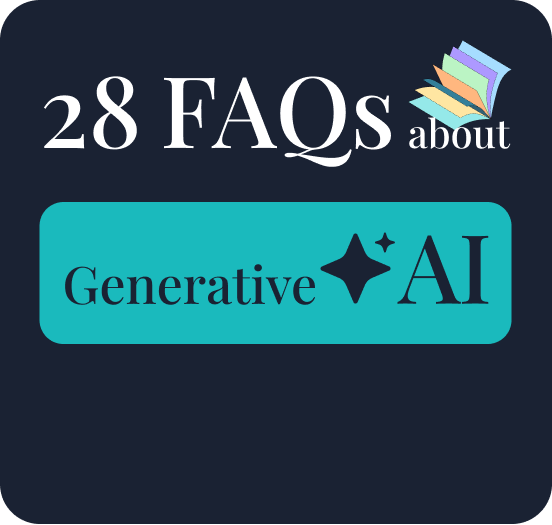How to Add a Chatbot to Your Website in Easy Steps

Chatbots have become a game-changer in customer interaction. They offer instant responses and 24/7 availability, enhancing user experience significantly. Did you know that 80% of customers report positive experiences with chatbots? This shows their growing importance in customer service. If you're wondering how to add a chatbot to a website, look no further than Sobot. As a leading provider of chatbot solutions, Sobot offers user-friendly tools to seamlessly integrate chatbots into your site. With Sobot, you can boost customer satisfaction and streamline interactions, making it easier for your business to thrive.
How to Add a Chatbot to a Website: Choosing the Right Platform
Choosing the right platform is crucial when you're figuring out how to add a chatbot to a website. The right choice can make all the difference in how effectively your chatbot serves your business needs.
Understanding Your Needs
Define the purpose of your chatbot
First, you need to define what you want your chatbot to achieve. Are you looking to enhance customer service, generate leads, or provide instant support? Each purpose requires different features and functionalities. For instance, if your goal is to improve customer service, your chatbot should handle FAQs and provide quick responses. On the other hand, a lead generation chatbot might focus on collecting user information and qualifying leads.
Identify key features required
Once you've defined the purpose, identify the key features your chatbot needs. Do you need it to integrate with existing systems like CRM or e-commerce platforms? Should it support multiple languages or offer personalized responses? Consider features like AI-driven responses, 24/7 availability, and data analytics. These features can significantly enhance user experience and operational efficiency.
Exploring Sobot's Offerings
Overview of Sobot's chatbot solutions
Sobot offers a range of chatbot solutions tailored to meet diverse business needs. Their platform provides a centralized inbox that integrates tickets, messages, and customer data into a single workspace. This integration streamlines customer service operations, making it easier for you to manage multiple online channels. Sobot's chatbots are designed to automate workflows, freeing up your team from repetitive tasks and allowing them to focus on more complex issues.
Benefits of using Sobot for your website
Using Sobot for your website comes with numerous benefits. Their chatbots offer speed and 24/7 availability, which are highly appreciated by consumers. By promptly addressing customer queries, Sobot's chatbots enhance customer engagement and loyalty. Additionally, they provide valuable data insights that can improve your marketing efforts and product development. With Sobot, you can drive sales and improve operational efficiency, ensuring your business thrives in a competitive market.
How to Add a Chatbot to a Website: Setting Up Your Sobot Account
Setting up your Sobot account is a breeze. You'll find the process straightforward and user-friendly, ensuring you can get your chatbot up and running in no time. Let's dive into the steps to create your account and configure it to suit your needs.
Creating an Account
Step-by-step guide to signing up with Sobot
- Visit the Sobot Website: Head over to the Sobot website and click on the "Sign Up" button.
- Enter Your Details: Fill in your basic information like name, email, and password. Make sure to use a valid email address as you'll need it for verification.
- Verify Your Email: Check your inbox for a verification email from Sobot. Click the link provided to confirm your account.
- Log In: Once verified, log in to your new Sobot account.
By following these steps, you’ll have your Sobot account ready in just a few minutes. This is the first step in learning how to add a chatbot to a website effectively.
Navigating the Sobot dashboard
Once logged in, you'll find yourself on the Sobot dashboard. This is your control center for managing your chatbot. The dashboard is intuitive, with clearly labeled sections for different functionalities. You can easily access tools for creating chatbots, managing conversations, and analyzing performance. Spend some time exploring the dashboard to familiarize yourself with its features.
Initial Configuration
Setting up basic preferences
After setting up your account, it's time to configure your basic preferences. Start by selecting your preferred language and time zone. This ensures that your chatbot operates in sync with your business hours and communicates effectively with your audience. You can also customize notification settings to stay updated on customer interactions.
Integrating with existing systems
Integration is key to maximizing the efficiency of your chatbot. Sobot allows seamless integration with existing systems like CRM and e-commerce platforms. This means your chatbot can access customer data and order details, enhancing its ability to provide personalized responses. By integrating with your current systems, you ensure a smooth flow of information, which improves customer service and operational efficiency.
Customizing Your Chatbot's Appearance and Conversation Flow

Creating a chatbot that aligns with your brand's identity is crucial. You want it to look appealing and communicate effectively. Let's explore how you can customize your chatbot's appearance and conversation flow using Sobot.
Designing the Chatbot Interface
Choosing a theme and layout
When designing your chatbot, start by selecting a theme and layout that matches your website's aesthetics. Sobot offers a variety of themes to choose from, ensuring your chatbot complements your site's design. A well-chosen theme enhances user experience and makes interactions more engaging. Consider how the layout will appear on different devices, ensuring it remains user-friendly across platforms.
Customizing colors and fonts
Colors and fonts play a significant role in branding. With Sobot, you can easily customize these elements to reflect your brand's personality. Choose colors that resonate with your brand's palette and fonts that are easy to read. This customization not only makes your chatbot visually appealing but also reinforces brand consistency. Remember, a cohesive design builds trust and encourages users to interact more with your chatbot.
Crafting the Conversation Flow
Using Sobot's conversation builder
A smooth conversation flow is key to an effective chatbot. Sobot's conversation builder allows you to create intuitive dialogues that guide users seamlessly. You can set up different paths based on user inputs, ensuring they receive relevant information quickly. The builder's drag-and-drop interface makes it easy to visualize and adjust the flow, helping you create a chatbot that feels natural and responsive.
Implementing FAQs and automated responses
To enhance your chatbot's efficiency, implement FAQs and automated responses. Sobot enables you to program responses to common queries, reducing the need for human intervention. This feature ensures users get instant answers, improving satisfaction and engagement. By analyzing user interactions, you can continuously update these responses, keeping your chatbot relevant and helpful.
Integrating the Chatbot into Your Website

Integrating a chatbot into your website is a crucial step in enhancing customer interaction. With Sobot, this process becomes seamless and efficient. Let's explore how you can embed and test your chatbot to ensure it functions perfectly on your site.
Embedding the Chatbot
Using Sobot's integration tools
To get started, use Sobot's integration tools. These tools are designed to make the embedding process straightforward. You simply need to copy the provided code snippet from the Sobot dashboard and paste it into your website's HTML. This action creates an iframe where your chatbot will appear. The integration tools support various platforms, ensuring that your chatbot fits seamlessly into your existing website structure. By following these steps, you can quickly learn how to add a chatbot to a website without any technical hassle.
Ensuring compatibility with your website platform
Compatibility is key when integrating a chatbot. Ensure that your website platform supports the chatbot's features. Sobot offers compatibility with popular platforms like WordPress, Shopify, and others. This ensures that your chatbot operates smoothly, providing a consistent user experience. Check your website's settings and adjust them if necessary to accommodate the chatbot. This step prevents potential issues and guarantees that your chatbot functions as intended.
Testing the Integration
Conducting initial tests
Once you've embedded the chatbot, it's time to conduct initial tests. Start by interacting with the chatbot as a user would. Test various scenarios to ensure it responds accurately and efficiently. Check if it handles FAQs, provides instant support, and integrates with your existing systems. These tests help you identify any glitches or areas that need improvement. By thoroughly testing, you ensure that your chatbot delivers a seamless experience to your users.
Troubleshooting common issues
During testing, you might encounter some common issues. These could include slow response times, incorrect answers, or integration errors. Sobot provides a centralized inbox that helps you manage these issues efficiently. Use the inbox to track customer interactions and identify patterns that indicate problems. If you face persistent issues, consult Sobot's support resources or community forums for solutions. Regular troubleshooting ensures that your chatbot remains reliable and effective.
By following these steps, you can successfully integrate a chatbot into your website. This not only enhances customer engagement but also streamlines your operations, making it easier for your business to thrive.
Testing and Optimizing Your Chatbot's Performance
Once you've integrated your chatbot, it's crucial to ensure it performs optimally. This involves monitoring interactions and making necessary updates. Let's dive into how you can achieve this.
Monitoring Chatbot Interactions
Analyzing user engagement data
To understand how well your chatbot is performing, you need to analyze user engagement data. This data provides insights into how users interact with your chatbot. Look at metrics like response time, user satisfaction, and the number of interactions. These metrics help you gauge the effectiveness of your chatbot. Did you know that 80% of customers report positive experiences with chatbots? This statistic highlights the potential for success when you monitor and optimize your chatbot effectively.
Identifying areas for improvement
Once you have the data, identify areas where your chatbot can improve. Are there questions it struggles to answer? Do users drop off at a certain point in the conversation? By pinpointing these issues, you can make targeted improvements. For instance, if users frequently ask questions outside the chatbot's programmed responses, consider expanding its knowledge base. Regularly refining your chatbot ensures it remains a valuable tool for your website.
Implementing Feedback and Updates
Gathering user feedback
User feedback is invaluable for optimizing your chatbot. Encourage users to share their experiences and suggestions. You can do this through surveys or feedback forms. According to a survey, 87.2% of consumers have had positive or neutral interactions with chatbots. This feedback can guide you in making enhancements that align with user expectations. By listening to your users, you can create a chatbot that truly meets their needs.
Regularly updating the chatbot's features
Technology evolves rapidly, and so should your chatbot. Regular updates keep your chatbot relevant and efficient. Incorporate new features based on user feedback and technological advancements. For example, if users express a desire for voice interaction, consider adding this feature. By staying proactive, you ensure your chatbot continues to provide exceptional service. Remember, a well-maintained chatbot not only improves customer satisfaction but also boosts your business's growth.
Adding a chatbot to your website offers numerous advantages. You enhance customer service and streamline operations. Chatbots provide instant responses and 24/7 availability, which boosts user satisfaction. According to our study, most businesses are very satisfied with how chatbots have improved their customer service and marketing operations.
To maximize these benefits, continuously optimize your chatbot with Sobot's support and resources. Sobot provides tools and insights that help you refine your chatbot's performance. This ongoing improvement ensures your chatbot remains effective and relevant.
A well-integrated chatbot can significantly enhance customer satisfaction and drive business growth. By leveraging Sobot's solutions, you position your business for success in a competitive market. Embrace the potential of chatbots and watch your business thrive.
See Also
Effortless Ways to Build a Website Chatbot
Step-by-Step Process for Integrating Chat on Websites
Best Tools for Incorporating Social Media Chat
